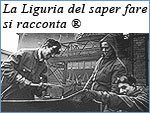|
|
|
 |
reviews |
 |
 |
 |
 |
 |
 |
On November 14th 2006, the conference “Impresa e cultura: una realtà che cresce” was held in the prestigious headquarters of the Piaggio Foundation in Pontedera (PISA). As part of the fifth edition of the Week of Business Culture, a well-organized calendar of events took place in several Italian cities. The program for this day offered stimulating interpretations of Italian history seen through its entrepreneurial heritage.
The Piaggio Foundation was created in 1994 according to the wishes of Giovanni Alberto Agnelli, then Chairman, and the City and Provincial Councils of Pisa. The Foundation demonstrates the determination of a longstanding enterprise to recreate and promote the value of its history and, in turn, make a positive contribution to the growth of society.
The conference day, organized by ISIA (Superior Institute for Artistic Industries in Florence) and by the Foundation, was also the occasion for the inauguration of a design exhibition that represents a meeting point between creativity and technology. Many scholars and leading personalities of business culture took part in the morning’s round table. The afternoon session, focusing on the theme of corporate social responsibility, was moderated by Tommaso Fanfani, Chairman of the Piaggio Foundation. Speakers, included Omar Calabrese and Rodrigo Rodriguez.
Giuseppe Paletta (nota vita Paletta in ingese), director of the Centro per la Cultura d’Impresa, moderated the morning’s debate, which was introduced by Davide Ravasi, of Bocconi University. Ravasi emphasized the link between the business and the territory on which it is built. His distinctly economic point of view indicates the museum as a place where some business resources might be enhanced to the point of overshadowing the museum’s true identity. The first speaker, Carolina Lussana, director of Dalmine Foundation, raised the thorny issue of the continuous evolution of identity in a business with discontinuous growth processes, yet with a wide range of aspects to be valorized. Dalmine’s business archives embody the history of a significant Italian industry (producers of non-welded steel tubes in the Bergamo Province) and are stored in the Foundation, which was set up as a non-profit body. Nowadays, the value of a business archives increases if we are able to transform them into places of interest for the enterprises themselves and the public.
On the other hand, Giuseppe Perfetti, chairman of the Galleria Ferrari, held a diametrically opposed position. He discussed the image of the museum of a large company that manufactures a product that enjoys worldwide success. In this case, the museum-gallery, on its own merit, becomes the showcase of a business and the achievement of its success all over the world. Perfetti claimed that nowadays, the major challenge for business archives and museums is to draw attention to themselves, establishing coexistence between the concept of identity and the various proposals for valorization. The success of the Ferrari museum plays on the emotions aroused in the visitor through the principle of fair competition, a symbol of its power in the world. The Ferrari museum therefore demonstrates the example of an enterprise whose mission is identified with the creation of a myth.
In contrast, Alessandro Lombardo on the activity of the Ansaldo Foundation, a model of economic territorial archives concentrated Lombardo examined the problems that arise when archives are considered as places where culture is “produced”; however, since many of them are inaccessible to the public, they need to identify their goals in order to satisfy the requests of a country in search of its identity and collective memory.
Scientific and cultural ethics on the one hand; competition and image on the other: here is a dilemma for both scholars and experts. How can they reconcile the research of historical truth and the desire to create a myth?
Elisabetta Bettio, director of the archives of the Savings Bank Foundation in Pisa, concluded the morning sessions with an explanation concerning problems of methodology and approach for a bank archives as a logical structure and unique experience.
The sessions resumed at 3 p.m. with the participation of the art critic and communication expert, Omar Calabrese and of Rodrigo Rodriguez, Chairman of ISIA and vice chairman of the lighting company Flos. Calabrese’s lecture centered on the meaning of corporate social responsibility from which derives a company’s decision to invest in culture. Social responsibility has two frontiers: the production of artifacts and the concept of Intangible Assets, which considers the company as producer of human, relational and organizational capital. These assets include the preservation of memory long-term aspect of social responsibility. According to Calabrese, losing historical memory means losing the memory of social responsibility itself. The afternoon session concluded with Rodrigo Rodriguez, who introduced the exhibition on design.
|
 |
|
| |
|
 |
 |
review |
|
|
|
|
 |

